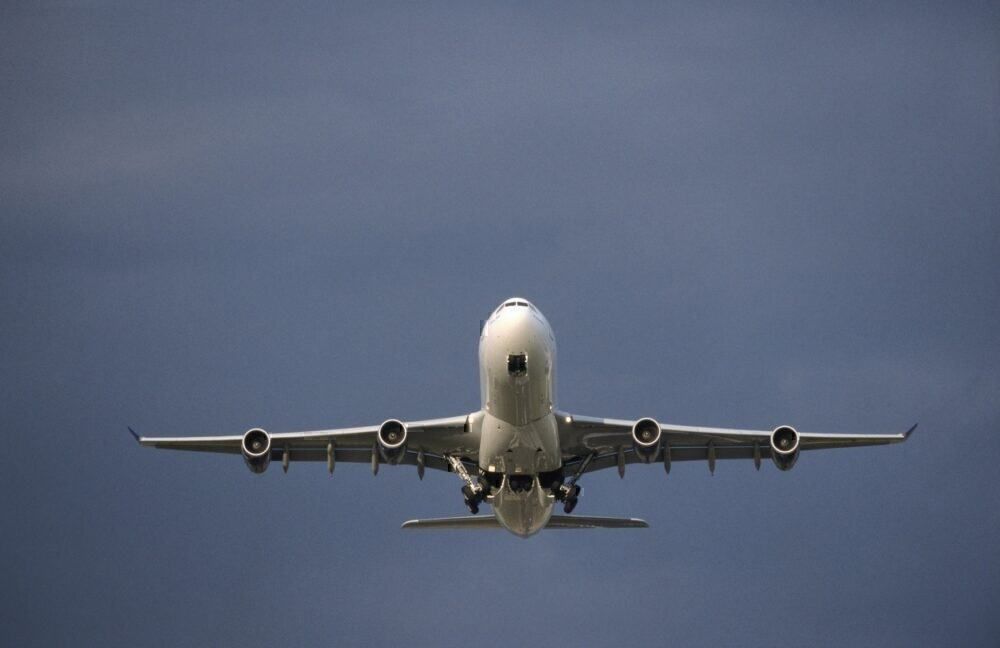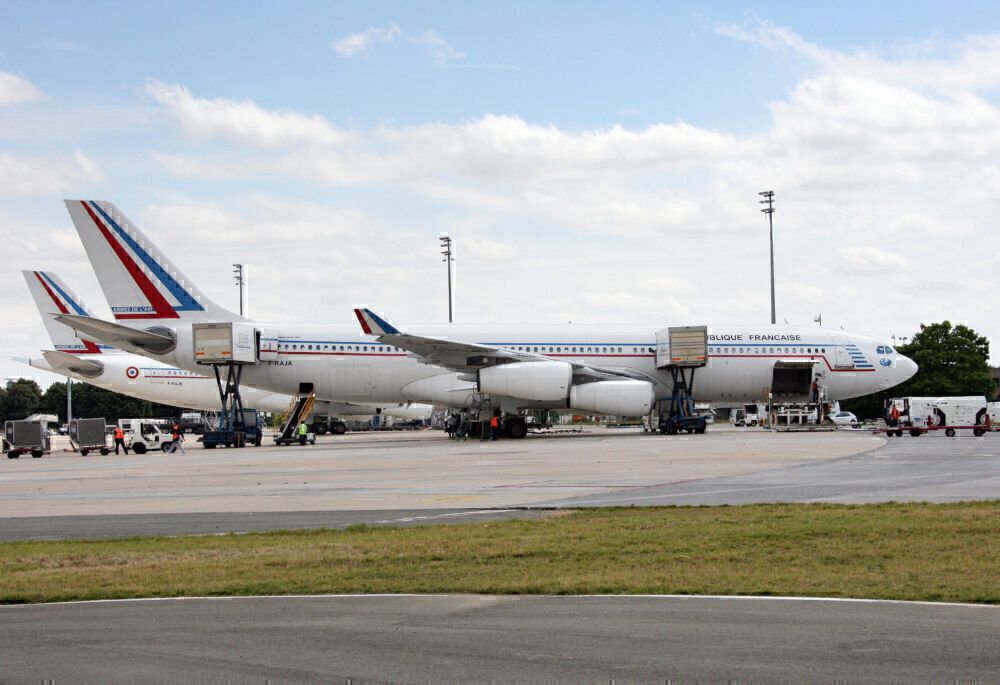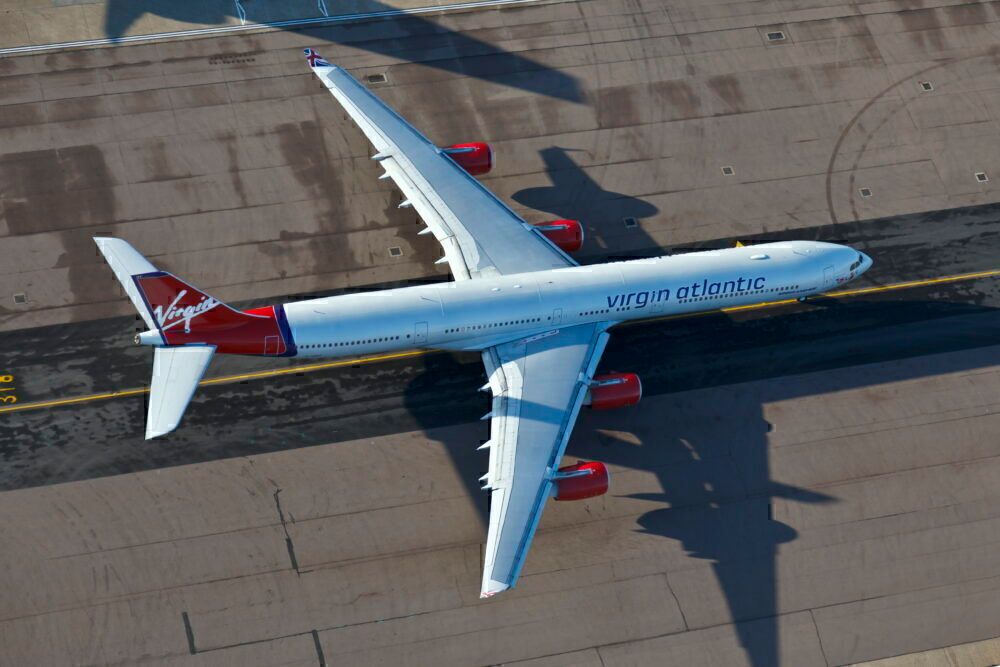The Airbus A340 is a quadjet long-range airliner that the European manufacturer produced between 1991 and 2011. At the start of this 20-year period, customers had a choice between just two variants: the -200 and the -300. But what are the differences between these two initial designs that preceded the longer -500 and -600 versions?
A brief history of the Airbus A340
Airbus announced the A340 in 1987, with the project running parallel to its twinjet A330. Both designs received their first orders at this time. They retained the eight-abreast economy class cross-section of the A300, Airbus's first airliner. The company also developed a shortened version, the A310, which first flew in 1982.
However, the A340 represented a significant technological advancement compared to Airbus's earlier products. Much like the narrow-bodied A320, the aircraft boasted a glass cockpit and fly-by-wire flight controls. It first flew in October 1991, with Lufthansa and then Air France launching the type commercially in March 1993. At this time, its primary competitors were the Boeing 777 and McDonnell Douglas MD-11.
However, the advent of ETOPS saw airlines quickly begin to favor more efficient, twin-engine aircraft for longer-haul routes. As such, despite announcing the higher-capacity -500 and -600 variants in the late 1990s, the A340 did not sell particularly well. Production ended in 2011, with just 377 examples delivered. Airbus has since developed the A350 XWB, a more-efficient long-range twinjet airliner.
Stay informed: Sign up for our daily aviation news digest.
The A340-200
The Airbus A340-200 was the smallest variant of the family, measuring 59.39 meters long. However, its wingspan, at 60.3 meters wide, was the same as that of the longer -300 variant. However, at 17.03 meters, its height was actually fractionally taller.
A typical three-class configuration on this aircraft would seat between 210 and 250 passengers. Its range in this instance would be 12,400 km (6,700 NM). In terms of cargo capacity, Airbus states that the -200 has enough underfloor space for nine pallets. Its maximum takeoff weight (MTOW) was 275 tonnes (606,000 lb).
Airbus only constructed 28 A340-200s, with airlines generally preferring the larger -300 (the advantages of which we shall examine shortly). One particularly interesting example was the so-called A340-8000. This modified version for the Sultan of Brunei had an extended range of more than 14,800 (8,000 NM). However, it appears not to have entered service in Brunei. After a long storage period with Lufthansa Technik, it moved to the Saudi Royal Flight in 2010.
The A340-300
Compared to the smaller A340-200, the -300 variant was immensely more successful on a commercial level. Airbus delivered 218 examples of this version, amounting to nearly eight times as many as the -200.
Over four meters longer, at 63.69 m in length, the -300 offered airlines a significant capacity advantage. In a three-class layout, it could typically seat between 250 and 290 passengers. Its range was also almost 1,000 km longer than that of the -200, coming in at 13,500 km (7,300 NM) with the aforementioned three-class configuration.
The A340-300 was marginally shorter than its -200 counterpart in terms of height, coming in at 16.99 meters. Meanwhile, its MTOW was slightly higher, measuring 276.5 tonnes (610,000 lb). Airbus lists its underfloor cargo capacity as up to 11 pallets.
As much is suggested by its considerable popularity relative to other variants. In the -300, Airbus appeared to have found something of a capacity sweet-spot. Indeed, while the later -500 and -600 models offered greater range and capacity, it far outsold both of them (32 and 97 examples respectively).
As such, the present operational status of the A340 continues to reflect the -300's relative popularity. Of the 104 examples still active, 62 are -300s. Lufthansa is the largest operator, currently flying 17 of the type, as well as 10 longer-fuselage -600s. With quadjets becoming an increasingly obsolete phenomenon in today's airline industry, it remains to be seen how much longer the A340 will continue to grace our skies.
Have you ever flown on either of these original A340 variants? Let us know your thoughts and experiences in the comments!




